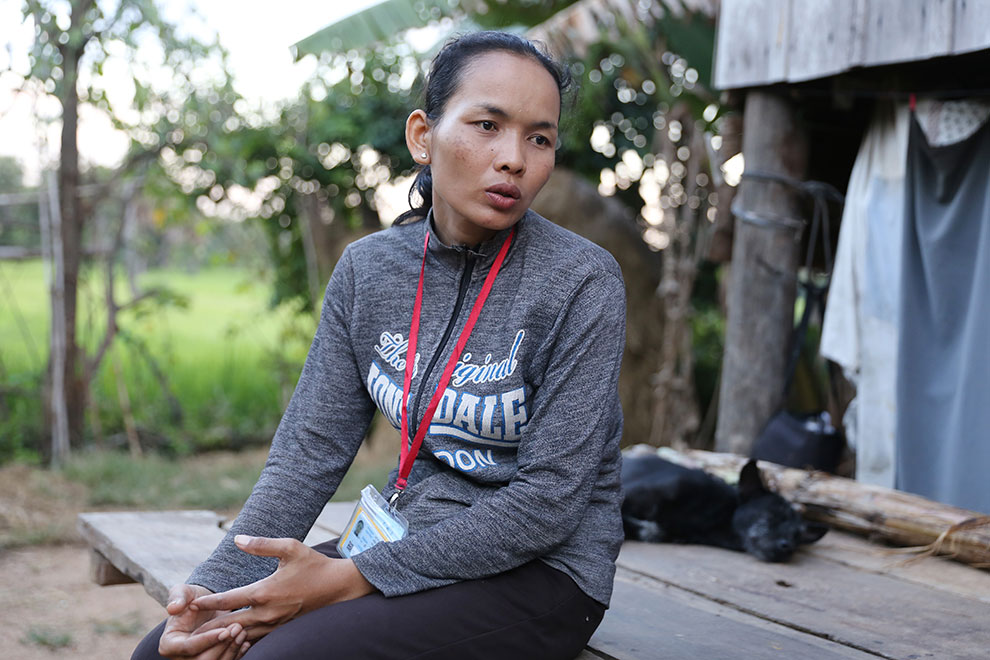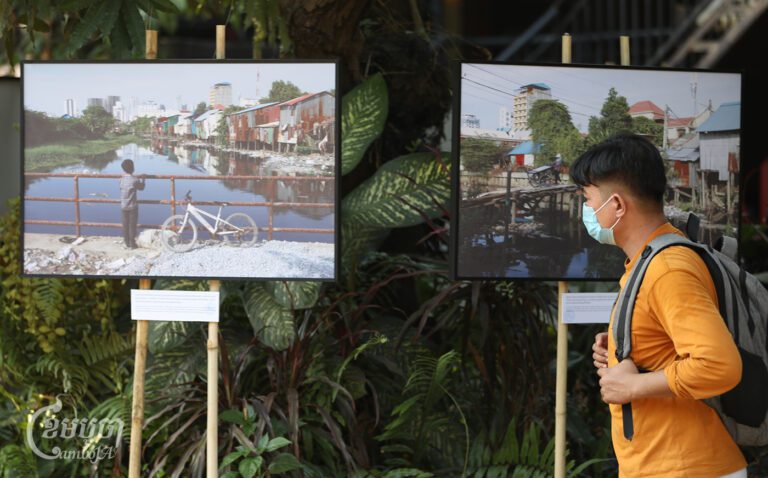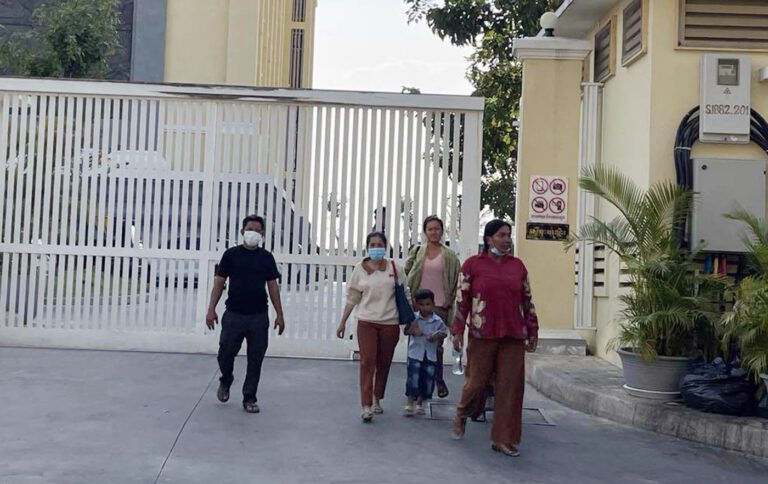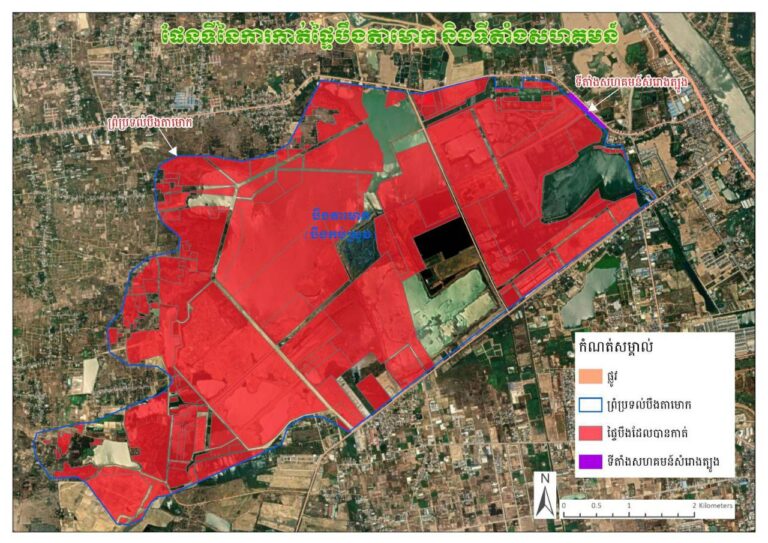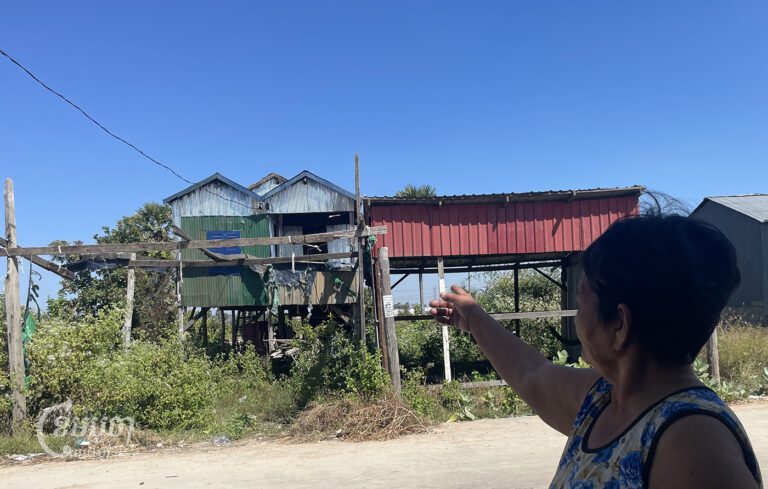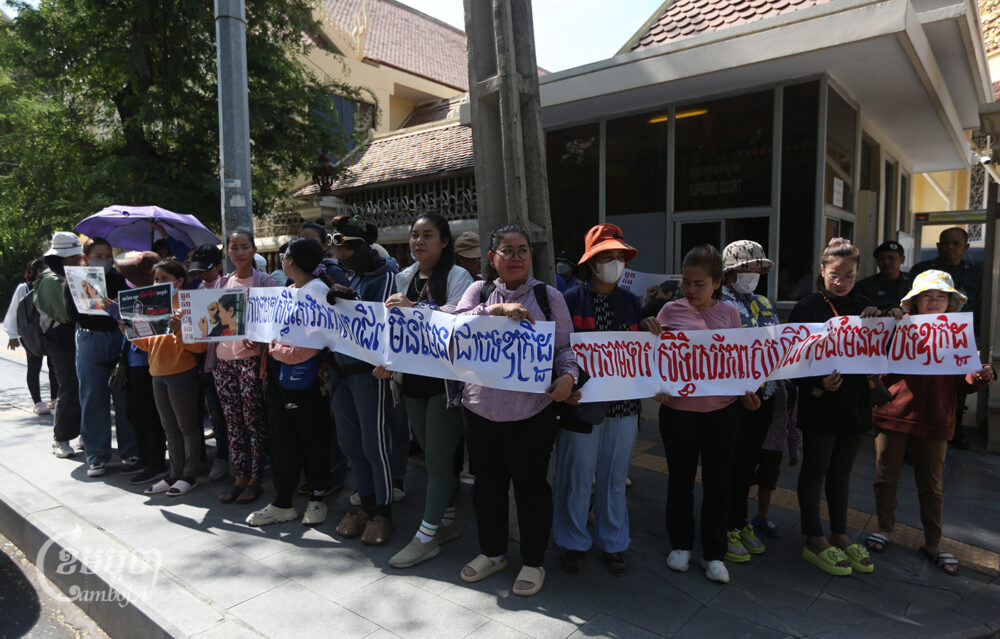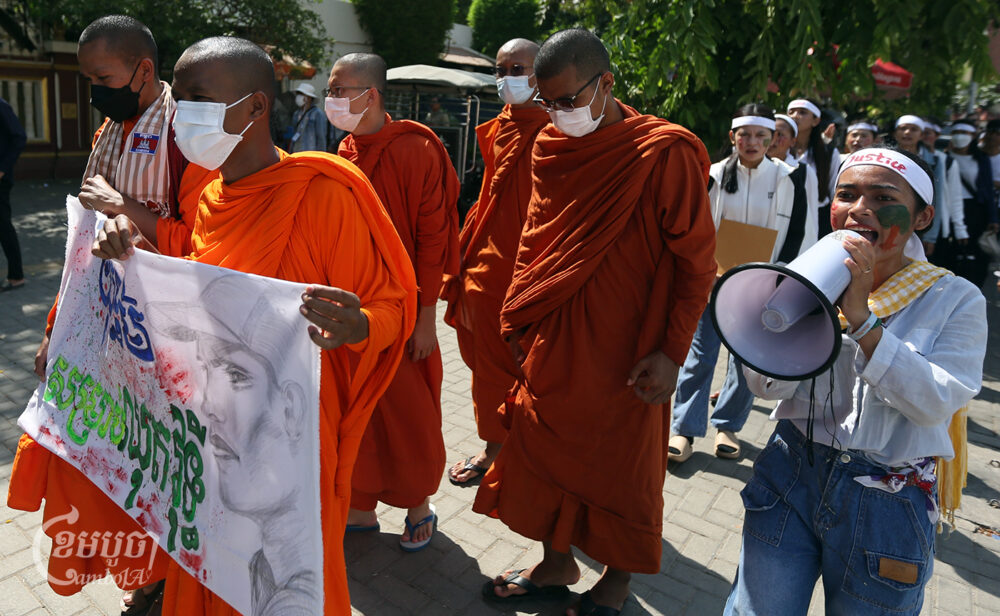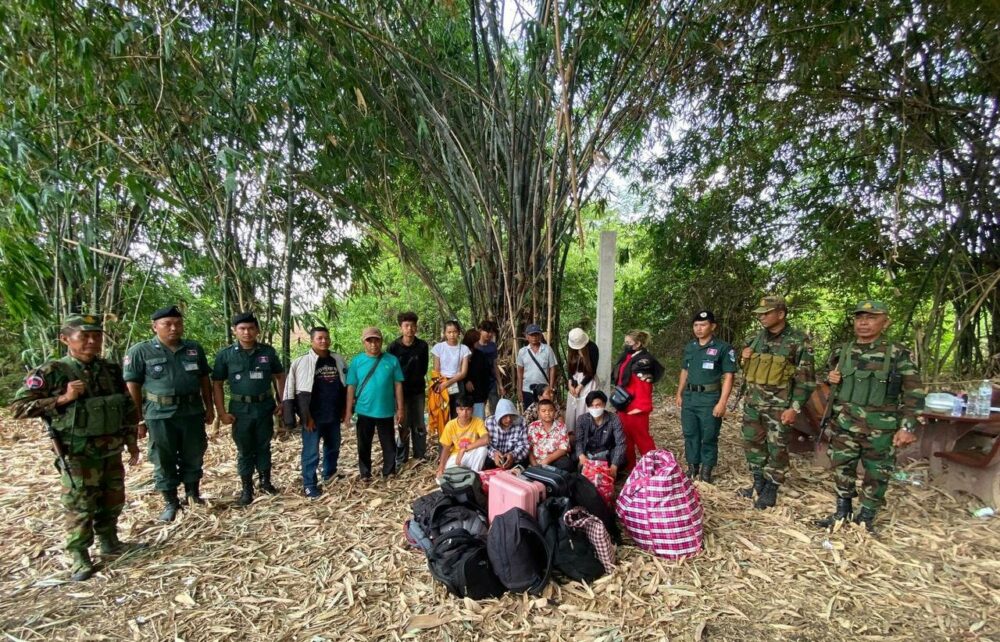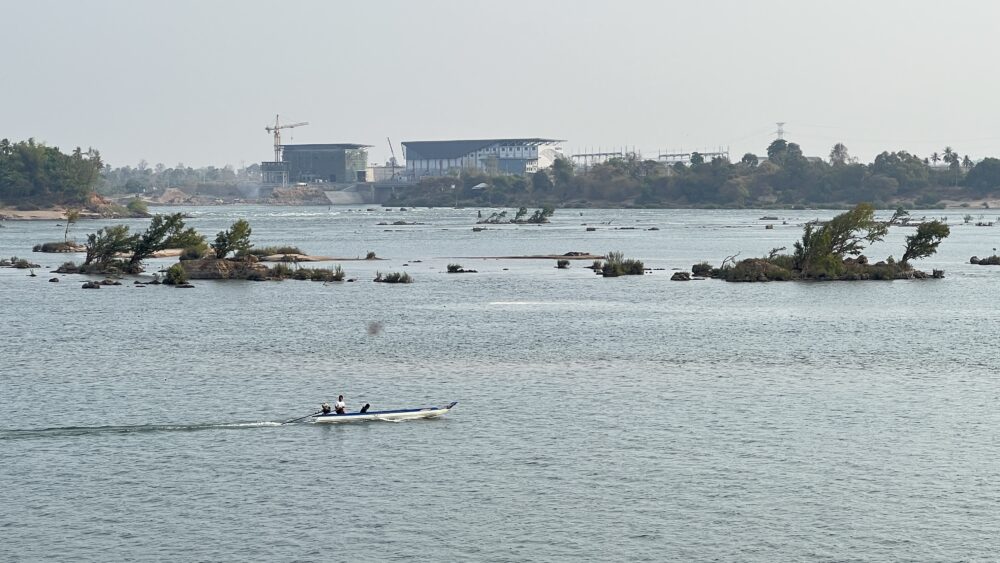As debt levels skyrocket, microfinance borrowers are suffering human rights abuses such as coerced land sales, child labor, debt-driven migration and debt bondage, rights groups Licadho and STT said in a report released today.
The research, which spans 10 communes in four provinces and Phnom Penh, feature seven detailed case studies of alleged human rights abuses. Similar cases can also easily be found around the country.
Phon Vanna, 38, and his wife work in factories. But he has had to take an extra job to try to repay his $10,000 debt to a microfinance institution and try to keep his land, which has been marked as collateral.
The MFI asked to see his pay slips: They amounted to roughly $182 per month for both him and his wife, or about $364 together.
The MFI has demanded repayments of $350 a month over four years, Vanna said.
“My wife and I have to save as much as possible, to make sure we have enough money to pay back the loan,” he said. “Otherwise, we face the loss of our land title and house.”
He said he had taken out the loan to buy a truck as a side business, as well as to send his four children to school.
According to the NGO report, total Cambodian microfinance debt has reached $8 billion this year — about $3,370 per borrower. This far exceeds the country’s GDP per capita of $1,384 in 2017 and is the highest microloan debt average in the world, the report says.
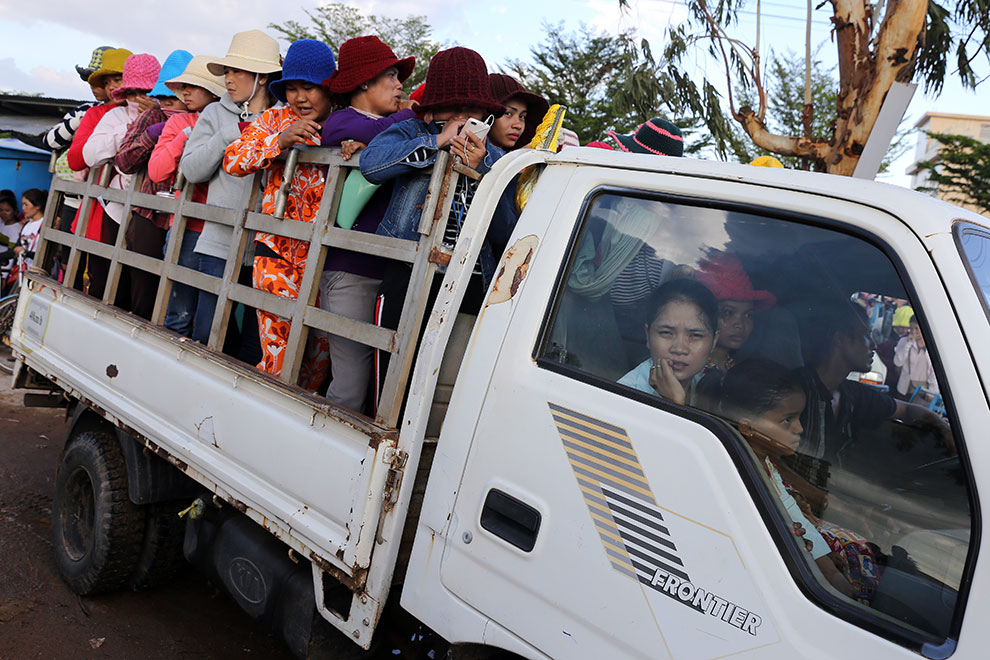
Economist Kim Sengty told CamboJA News that the country’s debt to income ratio had reached concerning levels.
The level of total debt indicated “too much over-indebtedness facing borrowers, especially farmers relying heavily on low productivity agriculture and high farming costs,” Sengty said.
“They cannot pay off their debts for sure.”
The NGO report says the seven largest MFIs in the country made more than $130 million in profit in 2017. Institutions providing funding to Cambodian MFIs include the development agencies or state banks of Austria, Spain, France, Germany, the Netherlands and U.K., as well as the European Investment Bank, International Finance Corporation, Asian Development Bank and World Bank, the report says.
Another factory worker, Seak Hong, had her family was facing similar hardships due to debt.
“I took a $5,000 loan from the MFI to renovate my house and pay for my brother’s medical bill after he had traffic accident,” she said, noting that she had deposited land as collateral in order to get the loan.
“The value of asset had to be two times more than the total amount of the loan they provide to me,” she said. The loan officers also checked her pay slip to make sure her income could cover repayments, she added.
Her village was full of families struggling with microfinance debt, she said.
“One of my neighbors, the family escaped to Thailand to look for job over there and left their kids with a sibling in the village, because they has debt from two or three MFIs and they couldn’t pay them back,” Hong said.
“The MFIs filed complaints to the court to confiscate their assets, since they couldn’t afford the payments, and their house and plot of land was sold to another neighbor at a lower-than-market price,” she said. “And they have nothing left now, so they migrated to work in Thailand to earn more money for their kids to go to school.”
Other acquaintances worked overtime in factories just to meet the pressure of MFI debt repayments, and they avoided joining unions because they were afraid of losing their jobs, Hong said.
“If they lose their job, their family would struggle. They depend so much on the salary they make in the factory,” she said
The Cambodia Microfinance Association (CMA) said in a statement that it “strongly disagreed” with the NGO report’s assertion that the industry’s profits were built on unethical lending practices and over-indebtedness.
“CMA is extremely sensitive to maintaining a sustainable sector. Issues of over indebtedness, responsible and transparent practices, are very regularly discussed in CMA Board and CMA general meetings,” it said.
“The Cambodian Microfinance sector has some of the most advanced and stringent risk analysis and mitigations procedures in conjunction with rigorous Client Protection measures amongst the major Microfinance markets in the world.”
Sengty, the economist, however, said his research showed microloans did little to improve the lives of the poor “because of their unproductive use of loans and limited financial literacy.”
Borrowers, especially those with a limited education, were often unaware of the full costs of taking out a loan, he said.
Microlending institutions should be more transparent so that the poor can make borrowing decisions more efficiently, he said.
Vanna, the factory worker with a side job as a truck driver, said he was recently suspended from work.
He said he was nervous about how he could meet his loan payments.
“I face losing my house and land,” he said.


